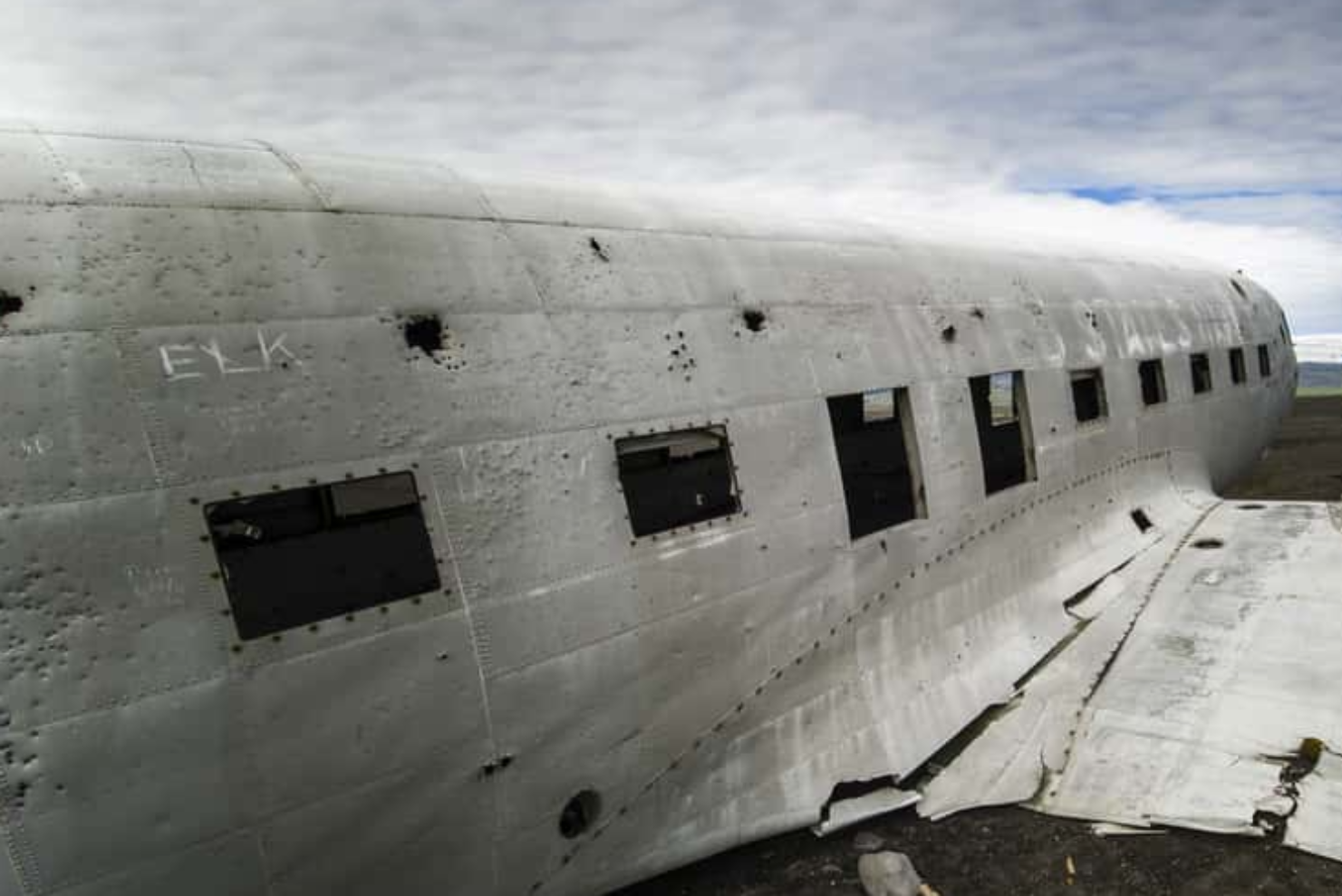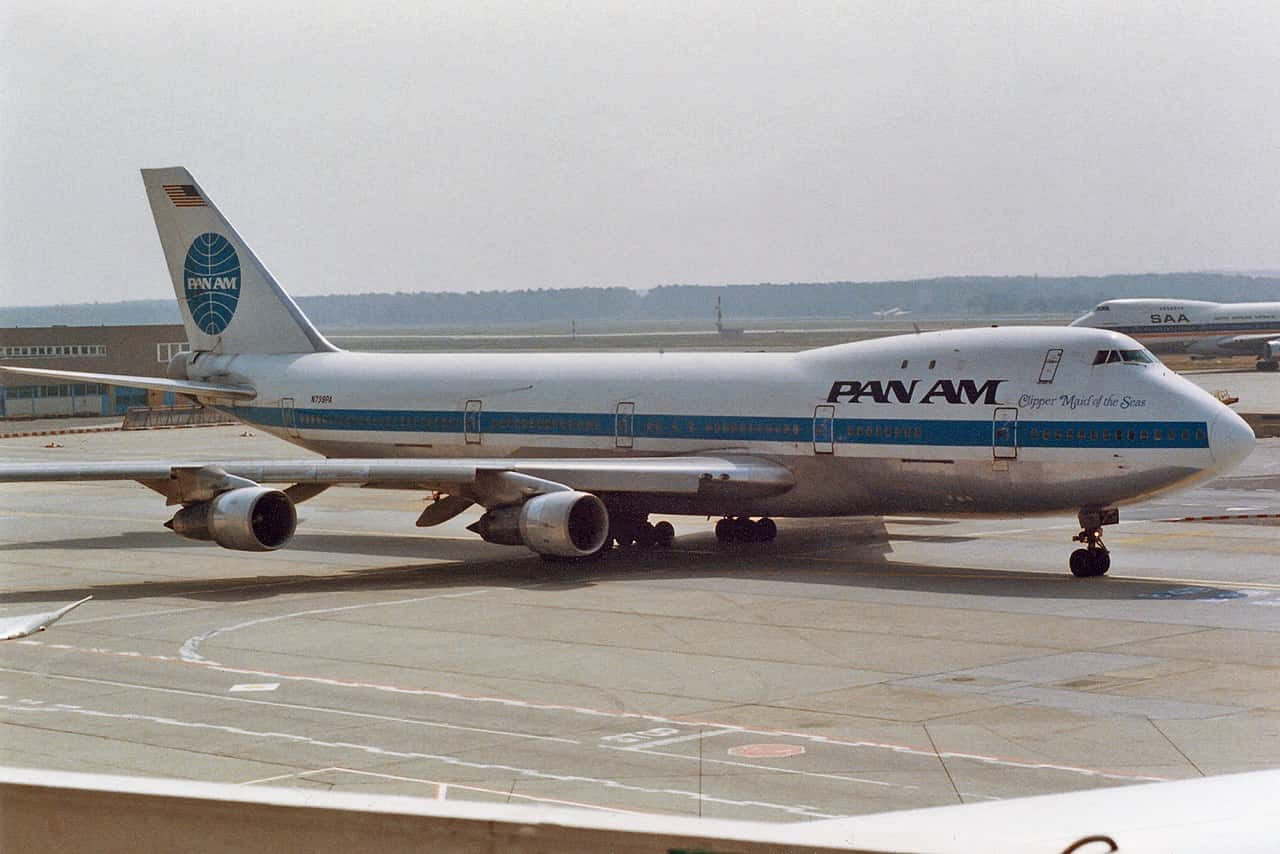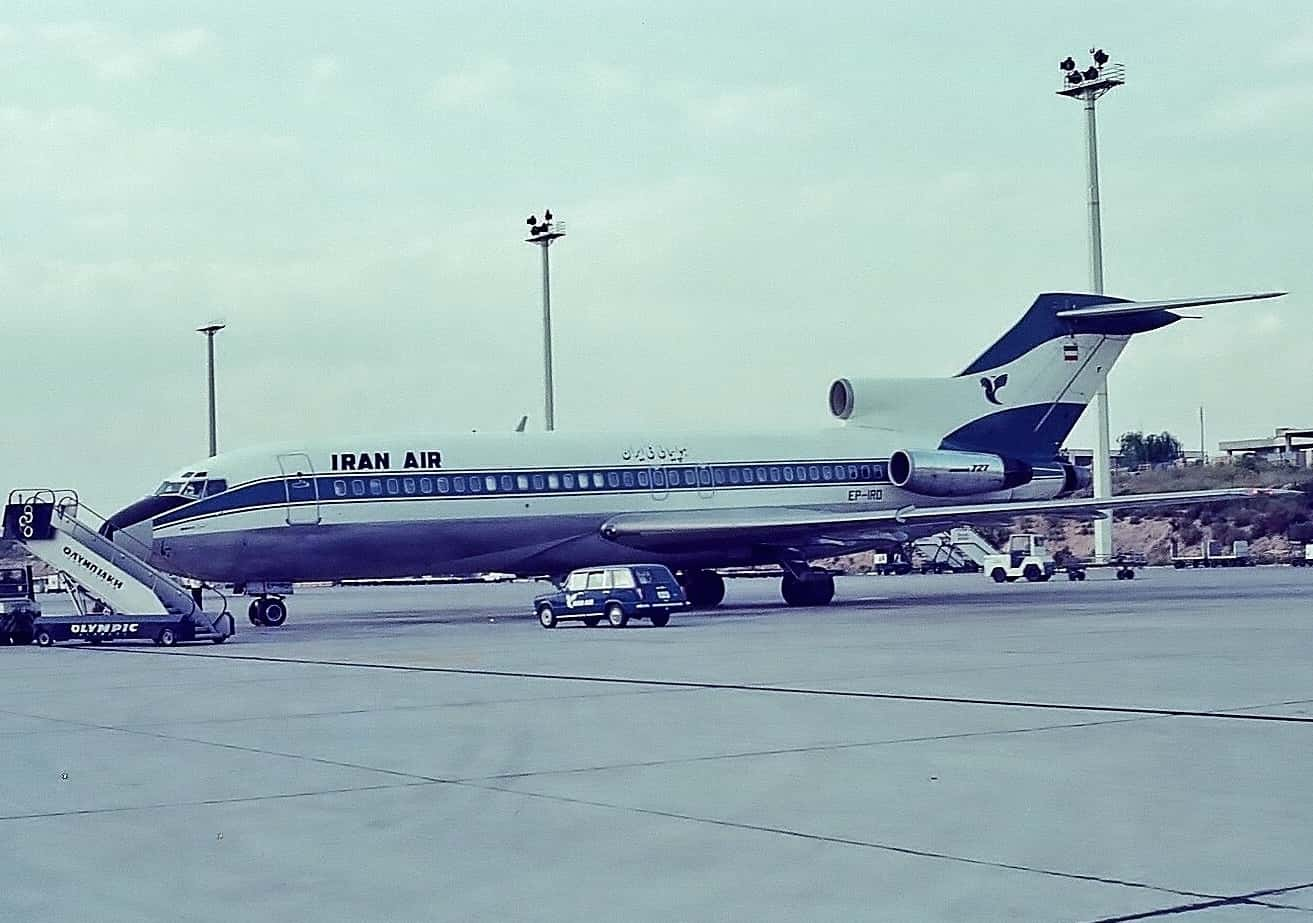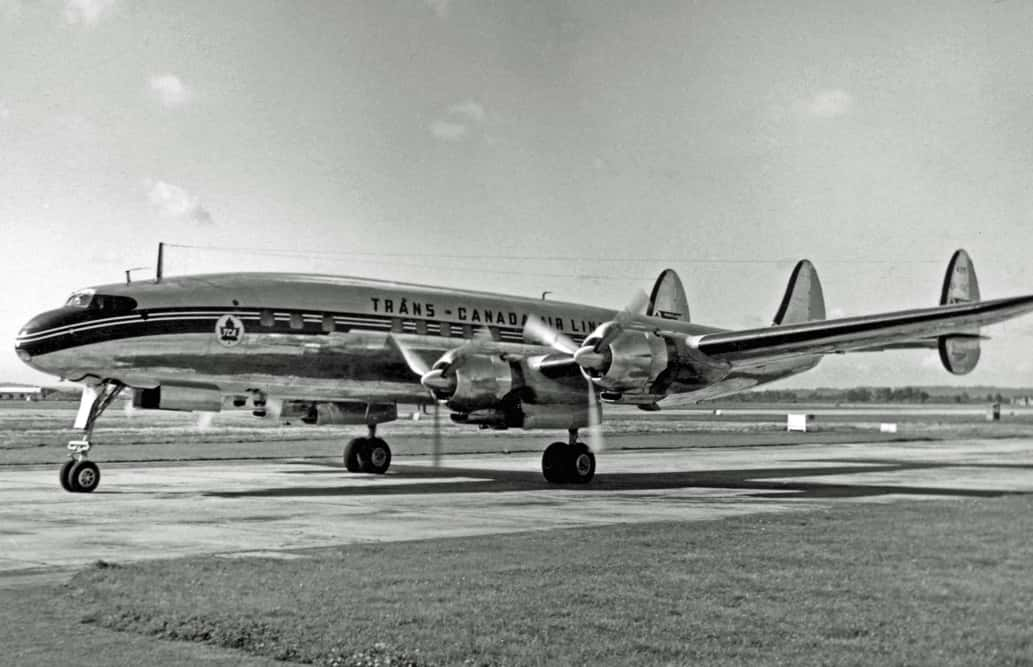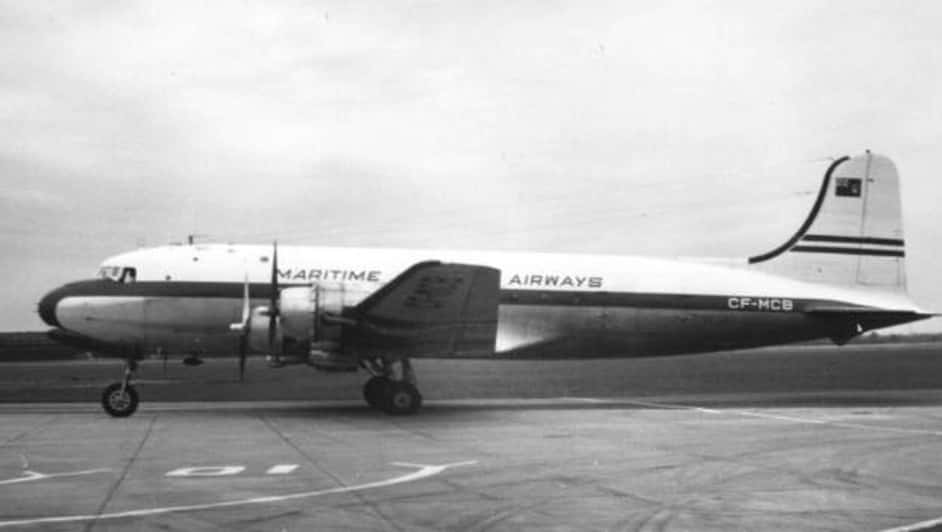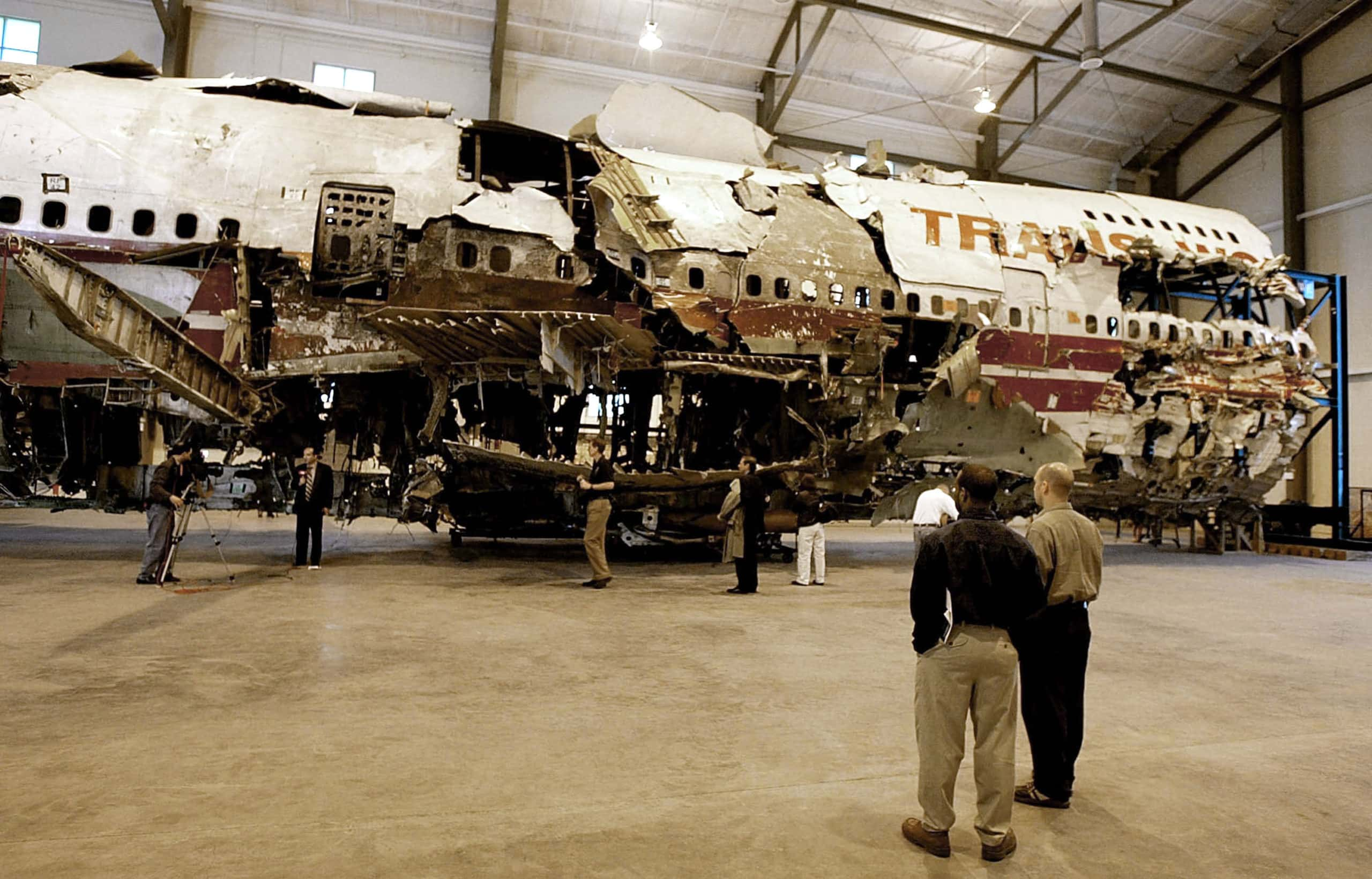"Failure saves lives. In the airline industry, every time a plane crashes the probability of the next crash is lowered by that". —Nassim Nicholas Taleb
It’s been just over 100 years since the first scheduled commercial flight took place and since then flying as a means of travel has become increasingly popular and commonplace. More than 8 million people fly every day and about 50 million tonnes of cargo is transported by air annually. While flying is one of the safest ways to travel (the odds of dying in a plane crash are 1 in 11 million), disasters do occasionally happen, and their spectacular nature makes it hard to look away. Below are 40 tragic facts about aviation disasters that range from miracle to catastrophe.
40. Smoke in the Cabin
In 1980, a Lockheed L-1011-200 TriStar left Riyadh International Airport in Saudi Arabia. Within seven minutes of takeoff, the crew received a warning that there was smoke in the aft cargo compartment. After confirming smoke was reaching the cabin, the pilot decided to turn around and return to the airport. The plane landed after just 20 minutes in the air but it was taxied on the runway instead of attempting an emergency stop. The engines kept running throughout the whole process, and the delay in the evacuation resulted in the deaths of all 301 occupants due to smoke inhalation.

39. Bad Weather
In 2003, a plane from the Iranian Air Force crashed in the Sirch Mountains in Iran. The aircraft was operated by the Aerospace Force of the Guardians of the Islamic Revolution and was carrying AFGIR members on an unknown mission when it crashed. There was bad weather in the area that day, including high winds and fog, and that’s what is believed to have brought the plane down. All 275 individuals on board lost their lives.
38. Everybody Good?
In 2005, Air France flight 358 completely overshot the runway at Toronto’s Pearson Airport and ended up in the nearby Etobicoke Creek. There were 43 people injured, but miraculously everybody survived.
37. Market Disaster
The 1996 Air Africa Crash was one of the deadliest plane crashes for those on the ground. When the flight attempted to take off the plane was overloaded and its license was out of date. Despite not reaching the proper speed for liftoff, it attempted to take off anyway and ended up crashing into a nearby marketplace. The plane exploded in a fireball and somewhere between 225 and 348 people lost their lives, with an additional 500 suffering injuries. Unfortunately, not much else is known about the crash, likely because the plan was operating illegally and so few records were kept.
36. Downed by a Downpour
On August 6, 1997, Korean Air Flight 801 was en route to A.B. Won Pat International Airport in Guam, carrying a total of 254 people. When attempting to land, there was poor visibility due to heavy rain and it crashed into high terrain at Nimitz Hill, approximately 3 miles south of the airport. The crash resulted in a 2,100 by 400-foot scar in the wreckage area, leading to the loss of 228 lives. A fatigued captain, poor communication, a lack of training for the plane's crew were all considered to be factors in the crash. One of the survivors remembered the horrific aftermath being like "a scene from a film".
35. Poor Simulation
A 2008 flight from Denver to Houston George Bush Intercontinental Airport was actually blown off the runway during takeoff. There were gusty crosswinds as the plane was attempting to take to the air and the pilot failed to make the proper adjustments to ensure the plane stayed on the runway. It was later noted that the Continental training simulator on which the pilot was trained did not replicate gusting crosswinds, and as a result, the captain was not "adequately prepared to respond". Several people on board were injured, but thankfully, no lives were lost.
34. Crashing in Paradise
In 2013, Lion Air Flight 904 was trying to land in Bali when it overshot the runway and landed in the water. There had been some rain in the area, and the final report blamed poor communication between the pilots and inadequate training for the crash. The plane broke into two pieces, and rescuers used rubber boats to evacuate the passengers and crew. Several individuals on board were hurt, but there were no fatalities. If there is a desirable place for your plane to land in the water, Bali would certainly be it.
33. Trees in Memoriam
In March 1991, a United Airlines 737 jet crashed into a park while approaching Colorado Springs, resulting in the loss of all 25 lives on board. Eight years after the crash, the National Transportation Safety Board determined that a rudder problem may have been the cause. Today, a gazebo with a memorial plaque stands in the park to remember the victims, and 26 ash trees were planted there—25 for the victims of the crash and one for a body that was being transported on the flight for burial in Colorado.
32. Wrong Turn
On September 26, 1997, Garuda Indonesia Flight 152 was on final approach to the Polonia International airport when it crashed into the mountainous woodlands. At the same time as 152 was making its descent, there was also another flight—Merpati Nusantara Airlines flight 241—in the area at the same time. A miscommunication by the air traffic controllers led the pilots to turn the wrong way, and at the wrong altitude. Thanks to low visibility caused by the South Asian Haze, they also did not notice that they were flying into high terrain. The pilots saw the mountain and tried to climb over the trees, but there wasn't enough time causing the plane to crash. This tragic accident resulted in the loss of all 234 lives on board.

Sign up to our newsletter.
History’s most fascinating stories and darkest secrets, delivered to your inbox daily. Making distraction rewarding since 2017.
31. Volcanic Catastrophe
A flight out of New Zealand in 1979 was taking its passengers on an 11-hour sightseeing trip of Antarctica. The plane used a computerized navigation system that would automatically fly to its destination once coordinates were entered. Unfortunately, the pilots didn’t know that two of the coordinates had been changed from their presented flight plan and so they entered the information incorrectly. They had also been given permission to fly low, and because of the incorrect coordinates, they had no idea they were flying towards Mount Erebus, an active volcano and the second tallest in Antarctica. By the time the deck altitude service began to blare its warning, it was too late, and six seconds later they hit the side of the mountain and disintegrated.
30. Burning Rubber
Nigeria Airways Flight 2120 was a passenger flight scheduled to fly to Sokoto, Nigeria from Saudi Arabia on July 11, 1991. Problems were reported shortly after takeoff and the crew attempted to immediately turn the plane around for an emergency landing. While attempting the maneuver the plane caught fire in mid-air and plummeted to the ground. It was later reported that the lead mechanic had noticed a discrepancy in the pressure of two of the tires but the manager didn't want to wait to fix the issue and ordered the plane to take off anyway. The issue increased friction on the tires enough to make them catch on fire, and when the landing gear retracted it brought the fire closer to the electrical and hydraulic systems of the plane. Soon after, the fuel tank caught on fire and engulfed the entire cabin in flames. All 261 people on board perished.
29. Broken in Three
On December 22, 2009, American Airlines Flight 331 attempted a difficult landing through a tailwind and a rainstorm and ended up overrunning the runway in Kingston, Jamaica. The landing was violent enough to crack the plane into three pieces. Luckily, the fences that were in place to keep a plane from skidding into the water worked, and everybody on board survived with minimal injury.
28. Speed of Sound
Lauda Air flight 004 was en route from Bangkok to Vienna when the thrust reverser on the left wing malfunctioned, causing the plane to catch fire and crash, resulting in the demise of all occupants on board. Reports stated that the dive into the Thai jungle could have exceeded Mach 1 (the sound barrier). It wasn’t until months later that the cause was determined to be technical.
27. Outdated Model
Air China had already been struggling with a poor air safety record when a China Airlines plane crashed in the Taiwan Strait in 2002. The plane completely disintegrated in mid-air so quickly that the crew did not even have time to send a distress signal. The 22-year-old plane was the only one of its kind still in passenger service, and it was due to be disposed of the following month. The cause of the crash was likely structural failure.
26. Too Close for Comfort
In early 2001, the Traffic Collision Avoidance System (TCAS) on Japanese Airlines Flight 907 began to go off. Another plane, Japan Airlines flight 958 was on a collision course with 907. After a series of communication breakdowns made a collision all but inevitable, the pilot of Flight 907 executed a violent dive at the last moment to avoid the collision. The dive was so sudden that 99 people on board were injured in the maneuver, but while the two planes came within 100 feet of each other, his quick thinking prevented what would almost certainly have been the deadliest airline accident ever.
25. Explosion Over Scotland
On December 21, 1988, 38 minutes after departure, Pan Am Flight 103 detonated 31,000 feet in the air above Scotland, with all 259 people on board tragically losing their lives, seemingly without reason. While investigating the debris, crews discovered pieces of a circuit board and a timer, leading them to deduce that an explosive device was responsible for the blast.
24. Nightmare in Queens
On November 12, 2001, while America was still recovering from the 9/11 terrorist attacks, American Airlines Flight 587 disastrously crashed shortly after departing from JFK airport in New York. It tragically landed amongst residential houses in Queens, resulting in the loss of all individuals aboard the plane and five people on the ground. Because of how soon after 9/11 it occurred, many people feared that the crash had been another act of terrorism, but the true cause of the crash was a failure of the plane’s tail due to pilot error in wake turbulence.
23. Fire Truck Crash
In March 2017, a plane belonging to South Supreme Airlines in South Sudan missed its line while landing in bad weather, causing it to collide with a fire truck and burst into flames. There were 44 people on board when it landed in the northwestern town of Wau after a flight from South Sudan's capital, Juba. Luckily, everybody on board survived, and only four people were injured.
22. Enormous Collateral Damage
The commercial Iran Air Flight 665 between Tehran and Dubai was shot down by the USS Vincennes, a US naval ship returning from a protective duty, on July 3, 1988, while flying in commercial airspace over Iranian waters. The ship wrongly identified the aircraft as an F-14A Tomcat, attempting to make contact via both armed forces and civilian distress channels. However, Flight 665 was not tuned in to the civilian frequencies as required. The USS Vincennes instantly discharged two SM-2MR surface-to-air missiles which resulted in the aircraft shattering into fragments, causing the demise of all 290 individuals onboard. To this day, the United States has not claimed liability for the incident nor given the government of Iran a formal apology, but they did agree to pay $61.8 million in compensation to the victim's families.
21. A Dirt Road Is No Place For a Plane
On July 30, 2011, a Caribbean Airlines jet en route from New York crashed in Guyana and split in two as it landed. The plane ended up overshooting the runway and crashing through a chain-link fence, coming to a stop on a dirt road around the airport. The final report found that pilot error was responsible for the crash. About 100 people received treatment for injuries such as broken legs and scratches, but there were no fatalities.
20. Punch It Chewie!
Actor Harrison Ford, Indiana Jones/Han Solo himself, is also an amateur pilot. On February 13, 2017, Ford was meant to land his plane on a runway at John Wayne Airport in Orange County, California, but mistakenly landed on a parallel taxiway, passing right over an American Airlines jet holding nearby. After the close call, Ford asked the air traffic controllers "Was that airliner meant to be beneath me?" This wasn’t the only time that Ford was involved in a crash. Back in 2015 he was seriously injured when he crashed his WWII era trainer on a Los Angeles Golf Course after losing power soon after takeoff. He was also involved in minor crashes in 1999 and 2000, but nobody in either of those crashes were injured.
19. Anything For the Votes
In May 2010, Nigel Farage, the leader of the UK Independence Party, made headlines when the small aircraft which he’d commissioned to pull a UKip banner crashed. Farage was to be along for the ride, but shortly after the plane took off the banner got caught in the plane's tail. Unable to drop the banner, it became clear the plane was going to crash. They hit the ground nose first, and Farage was suspended upside down in his seat, six inches from the ground, held in by his seatbelt. He managed to free himself from the wreckage by grabbing the upturned wheel of the plane to pull himself out. Promptly after the incident, he asked his assistant to help him ignite a small roll of paper, which, in retrospect, he acknowledged as a poor decision while amidst a wreckage surrounded by airplane fuel.
18. Homes Trembled
When Swissair Flight 111 crashed into the Atlantic Ocean just off of Peggy’s Cove, Nova Scotia, people reported feeling their homes tremble. The flight took off from JFK airport in New York, and a little less than an hour later the crew reported smoke. The plane was cleared to proceed to the airport in Halifax, Nova Scotia but crashed before it could get there, resulting in the deaths of all 229 people on board. The recovery effort managed to retrieve 98% of the aircraft and 15 tonnes of cargo, but a Picasso painting worth $1.5 million was among the unrecovered items. A memorial was put in the town near the sea, with the names of the crash victims carved into stone.
17. Storm Warning
On December 21, 1992, Martinair flight 495 crash landed in the Seven Virgins Mountain Range in Sri Lanka, resulting in the loss of all lives on board. On the morning of the accident, the crew was informed of thunderstorm activity in the area, and that there was water on the runway. The plane had to abandon its first landing attempt, and while trying to come around for another go, severe wind hit the plane and it went down. Firefighters reported seeing an explosion coming from the aircraft before it crashed. The final cause was determined to be a combination of bad weather and a series of crew errors.
16. Overstuffed Pig
"Miss Piggy" was the nickname given to a Curtiss C-46 Commando cargo aircraft operated by Lamb Air in Northern Manitoba, Canada. The plane was given the nickname because it could carry an enormous amount of cargo. On November 13, 1979, Miss Piggy left the airport in Churchill, Manitoba and shortly into the flight, the engine oil temperature rose, and a drop in oil pressure forced them to descend and turn back. Despite the plane's reputation, it was overloaded and couldn't fly properly. It was forced to land a quarter of a mile short of the runway, and while three crewmen were injured, everybody survived. Today, the plane rests on a cliff edge north of the airport and is a Churchill tourist attraction.
15. All-Star Tragedy
One of the most tragic Canadian Aviation disasters in history was the crash of a Trans-Canada flight in Dec. 1956, where 62 people on board tragically lost their lives. The plane disappeared en route from Vancouver to Calgary and the wreckage was eventually found on Mount Slesse, British Columbia. Passengers included members of the Saskatchewan Roughriders and Winnipeg Blue Bombers football teams heading home from an all-star game. The flight, known as "The Fang," was attempting to return to Vancouver because of icy conditions when it disappeared over the mountains. It remains Western Canada’s worst aviation disaster.
14. Into a Cloud
Less than a year after the Trans-Canada crash, a Maritime Central Airways DC-4 crashed in bad weather near Quebec City, leading to the demise of 79 people. The flight was carrying Canadian veterans home from visits with family in Great Britain. The aircraft flew into a large cloud and encountered severe turbulence, losing control and going into a near-vertical dive. It slammed into the ground at a speed of 200 knots in a 70-degree nose-down position. Everyone on board perished on impact.
13. Lost While Looking
In 1950, A US Air Force C-47 was searching for a missing plane when it crashed near Haines Junction in the Yukon, Canada. According to the Aviation Safety Network, the plane got caught in a downdraft and flew into the side of a mountain while flying low at high speed. Thankfully, there had recently been a huge snowfall and so the snow slowed the force of the crash landing enough that everybody onboard survived.
12. Short Circuit or Something Else?
21 years after the TWA Flight 800 crash that claimed the lives of 230 people, questions still surround the accident. On July 17, 1996, it took off from JFK, headed for Paris, and 12 minutes later it exploded over Long Island. After four years investigating the crash, The National Transportation Safety Board eventually ruled the cause to be a short circuit in the fuel tank. Some eyewitnesses reported seeing something heading towards the plane when it exploded, and the FBI reportedly interviewed over 755 people about the accident. While the Government denies that it was anything other than an accident, the crash has led to a conspiracy theory that the real cause has been covered up by the State.
11. Mid-Air Collision
In 1996, a tragic incident occurred over the village of Charkhi Dadri, India, involving a Boeing 747 belonging to Saudi Arabian Airlines and an Ilyushin II-76 aircraft operated by Air Kazakhstan. The unfortunate event claimed the lives of 349 people. When the Air Kazakstan flight descended to less than 14,000 feet despite the air controller’s warnings, it collided with the Saudi flight which was traveling on the same path, but the opposite direction. It was the worst ever mid-air collision in aviation history.
10. Terror in the Air
On June 23, 1985, Air India Flight 182 fell victim to a terrorist assault, which led it to plunge into the Atlantic over Irish airspace. A destructive device planted by terrorists detonated at an altitude of 31,000 feet, and bodies were discovered in the waters about 190 km off the coast of County Cork, Ireland. All 329 individuals on board perished, the majority of whom hailed from Canada, the UK, and India.
9. Lost Engine
In May 1979, as American Airlines Flight 191 left O’Hare airport, the left engine disastrously detached from the aircraft. The left wing was damaged when the engine fell off, causing it to provide less lift. Subsequently, the plane banked uncontrollably and reached a height of 400 feet before crashing about a mile away from the airport. The plane burst into flames and the smoke could be seen up to eight miles away. All 271 people on board and two on the ground lost their lives.
8. Communication Breakdown
On September 1, 1983, Korean Airlines Flight 007's autopilot accidentally made it deviate from its assigned route and enter restricted Soviet airspace off the Kamchatka Coast. The Soviet Air Force deployed two fighters to intercept the aircraft. The plane was quickly located, and the pilots tried to communicate with them, but they received no answer. One of the interceptors then fired a Kaliningrad R-8 air-to-air missile, which knocked the aircraft into the Sea of Japan. All 269 passengers and crew lost their lives.
7. A Distorted Signal
On March 3, 1974, Turkish Airlines Flight 981 crashed just outside of Paris. As the plane passed over the town of Meaux, controllers received a strange, distorted signal from the aircraft. Shortly after, it disappeared from radar and crashed in the Ermenonville Forest. A rear cargo hatch failure resulted in the crash, and not a single one of the 346 people on board survived.
6. Conflict Zone
Malaysia Airlines Flight 17 was a scheduled passenger flight from Amsterdam to Kuala Lumpur in July of 2014. It was shot down over Eastern Ukraine near the Russian border, likely by separatist forces who were in control of the region during the Conflict in Donbass between the Ukrainian Government and the pro-Russian separatists. The International Civil Aviation Organization had issued a warning of a risk to passenger jets in the area, but not all airlines changed their routes. The crash resulted in the loss of all 298 people on board.
5. Arrow Crash
The 1985 Arrow Air crash was the deadliest aviation disaster in Canadian history. All 256 individuals on board lost their lives, including 248 American servicemen who were on their return journey to the US after a peacekeeping mission in Egypt. The plane crashed minutes after stopping to refuel in Gander, Newfoundland, and was en route to Fort Campbell, Kentucky. The official cause was listed as ice on the wings, but Les Filotas’s book An Improbable Cause makes the argument that other causes such as an explosion might have been the real reason the plane went down.
4. The Miracle on the Hudson
The best-known near miss in aviation history became the subject of a 2016 film starring Tom Hanks. On January 15, 2009, the plane took off from LaGuardia Airport in New York, and in less than 20 minutes was landed on the Hudson River. As the plane reached an altitude of 3,000 feet, it encountered a flock of Canada Geese. Birds were sucked into not one but both of the plane's engines, which immediately burst into flames. With little thrust and little altitude, Captain Chesley “Sully” Sullenberger quickly realized that they wouldn’t be able to make the runway at LaGuardia for an emergency landing, and made the decision to land in the Hudson River. He cleared the George Washington Bridge by 900 feet and completed an unpowered landing in the Hudson. The passengers and crew were safely evacuated, and the near miss is now referred to as “The Miracle on the Hudson".
3. Pressure Failure
The deadliest single-aircraft disaster involved a plane with 524 people on board; 4 survived. Flight 123 was a domestic passenger aircraft operated by Japan Airlines between Tokyo International Airport and Osaka International Airport. On August 25, 1985, the flight took off from Haneda Airport in Tokyo, but about 12 minutes after takeoff it experienced rear pressure bulkhead failure. As a result, the plane crashed into the nearby Mount Takamagahara and despite the efforts of rescue crews, only four people were able to be saved.
2. Planes Colliding
On March 25, 1977, two Boeing 747s collided on a runway at Los Rodeos Airport, Tenerife in the Canary Islands. Due to an explosion that resulted in the closure of the nearby Las Palmas airport, Tenerife experienced an unusual increase in traffic. A rare procedure called a “back-taxi” placed the two planes on the runway at the same time, and they were not only invisible to each other, but also to the control tower. Low visibility due to fog and a series of other errors caused the two planes to collide. That day, five hundred and eighty-three people lost their lives, marking it as the worst disaster in aviation history.
1. The Wrong Move
Cockpit audio recordings of the ill-fated Air France Flight 447 revealed that just before plunging into the Atlantic Ocean, one of the pilots audibly exclaimed, "F**k, we're finished!". On May 31, 2009, the plane took off from Rio de Janeiro and hit a thunderstorm over the sea. The junior pilot at the helm pitched the craft sharply up instead of down, leading it to stall and come crashing down into the ocean. All individuals aboard perished upon impact, and the aircraft promptly sank into the profound depths of the water.
Source: 1, 2, 3, 4, 5, 6,7, 8, 9, 10, 11, 12, 13, 14, 15, 16, 17, 18, 19, 20, 21, 22, 23, 24, 25, 26, 27, 28, 29, 30, 31, 32, 33, 34, 35




